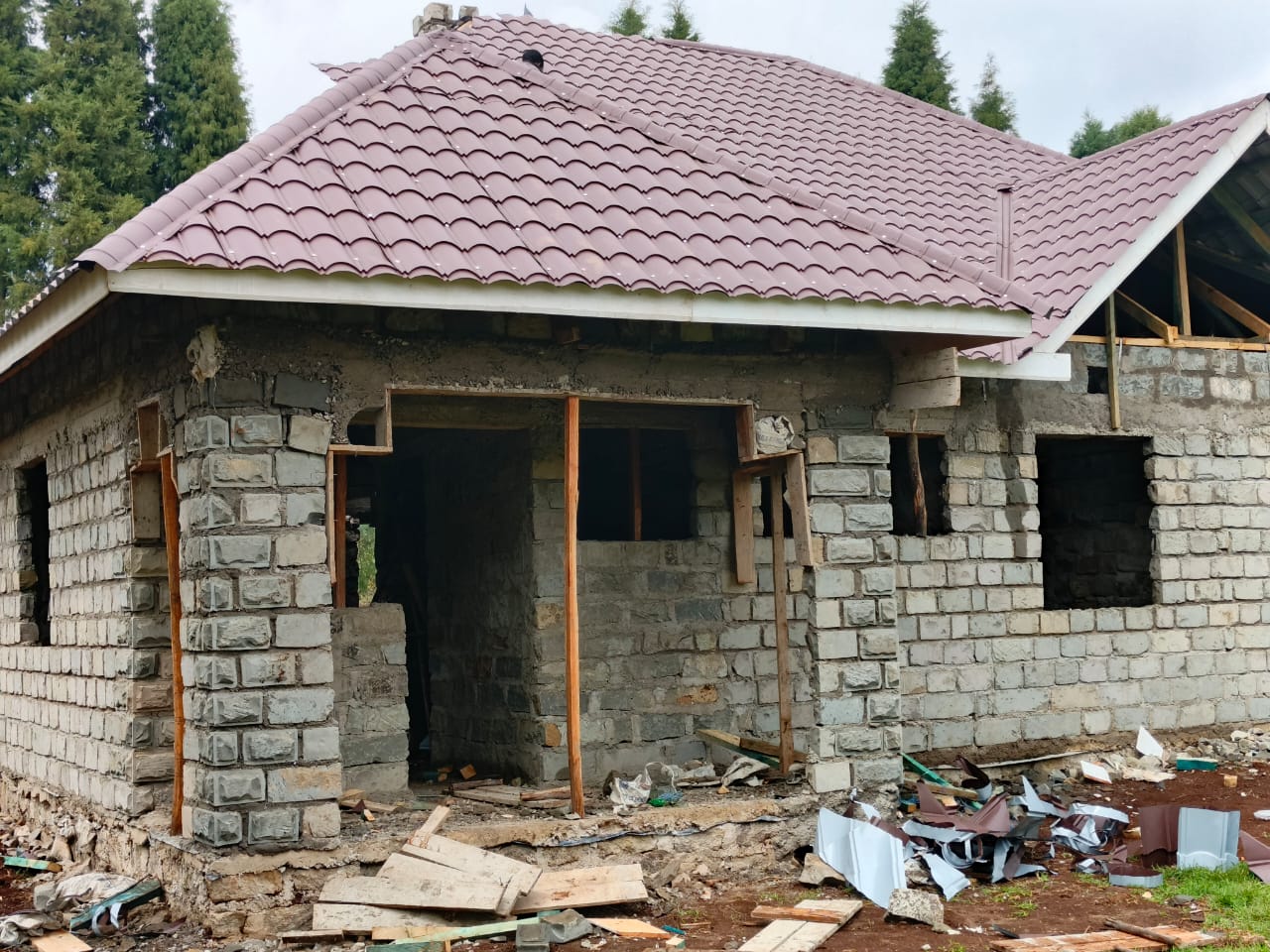Want durable, stylish wall cladding in Kenya? This practical buyer’s guide compares stone, manufactured veneer, WPC and other exterior finishes, shows Kenyan price ranges, installation steps, maintenance tips and where to buy — with a supplier checklist and sample costs to help you get quotes fast.
What is wall cladding and why it matters in Kenya
Definition, primary purposes (protection, insulation, aesthetics)
Wall cladding in Kenya refers to applying an extra protective and decorative layer on a building’s exterior walls. It enhances the building’s visual appeal while shielding it from harsh weather conditions like sun, rain, and dust. This added layer also improves insulation, helping to regulate indoor temperatures and reduce energy costs. Beyond protection and comfort, cladding gives homes and commercial buildings a modern, elegant look that boosts property value.
How Kenya’s climate (rain, sun, coastal zones) affects choice
Kenya’s diverse climate heavily influences which wall cladding material works best. In hot, dry areas, materials like stone and fiber cement panels resist cracking and fading under intense sunlight. Coastal regions require cladding that can handle humidity and salt exposure, such as PVC or treated stone. Meanwhile, high-rainfall zones benefit from waterproof finishes and proper sealing to prevent moisture buildup. Selecting materials based on climate ensures durability and long-term performance.
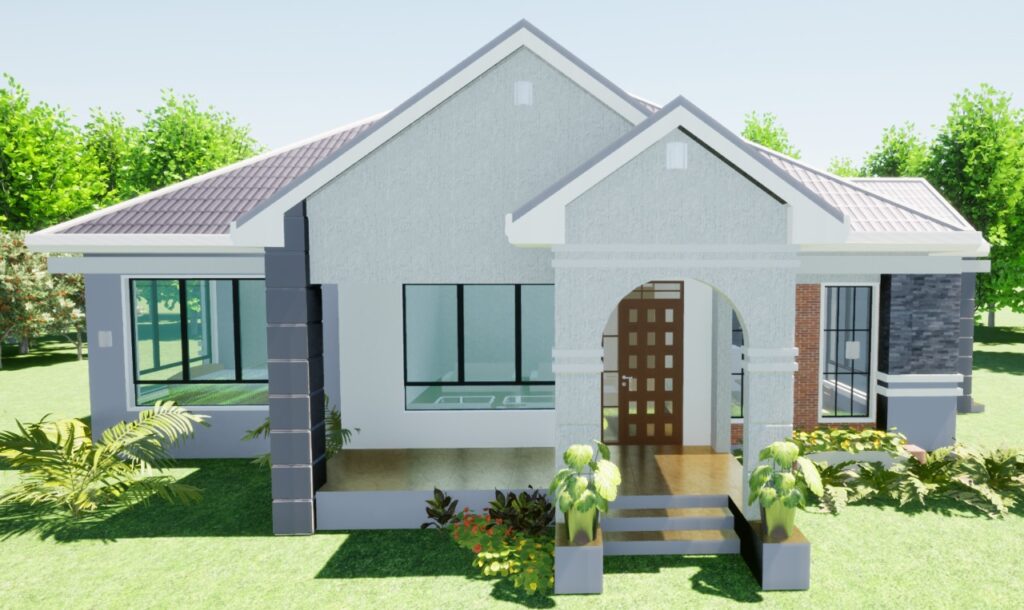
Overview of exterior wall finishes available in Kenya
Natural stone (Mazeras, Machakos, Coral, Ruby) — pros & cons
Natural stone cladding remains a popular choice for homeowners seeking a premium finish. Stones like Mazeras, Machakos, Coral, and Ruby offer unique colors and textures that enhance curb appeal. They’re durable, fire-resistant, and low-maintenance, making them ideal for long-term use. However, natural stone can be costly to install and may require skilled labor. Transport costs also vary depending on proximity to quarries and suppliers.
Manufactured stone veneer & stone tiles — when to pick veneer vs full stone
Manufactured stone veneer provides the same elegant look as real stone but at a fraction of the weight and cost. It’s easy to install, reducing labour time and expenses, especially for high-rise buildings. Full natural stone is better for projects needing maximum durability and impact resistance. Veneers work best for decorative facades and interior accent walls, offering flexibility and affordability without sacrificing aesthetics.

Timber & WPC cladding (pros, termite/UV considerations)
Timber cladding adds warmth and natural texture to building exteriors, but in Kenya’s tropical climate, it needs proper treatment to resist termites and UV damage. Wood plastic composite (WPC) cladding solves these issues by blending recycled plastic and wood fibers, creating a low-maintenance, termite-resistant finish. WPC panels maintain their color longer and perform better in humid areas, making them suitable for both urban and coastal properties.
Metal, fiber cement, PVC & composite panels — quick comparison
Metal cladding, often made of aluminum or steel, offers a sleek, modern look and superior weather protection but can be noisy during rainfall. Fiber cement panels combine cement and cellulose fibers for a durable, fire-resistant finish that mimics stone or wood. PVC panels are lightweight, affordable, and easy to install but may fade over time with excessive sun exposure. Composite panels, which merge metal and plastic, balance durability with a contemporary aesthetic.
Emerging & sustainable options (mycelium panels, recycled-composite boards) — what’s available in Kenya and why they matter
Sustainability is shaping the future of wall finishes in Kenya. Mycelium panels—made from mushroom roots—and recycled composite boards are eco-friendly alternatives now entering the local market. They reduce waste and carbon emissions while offering natural insulation. Though still new in Kenya, they’re ideal for eco-conscious developers looking to combine sustainability with style. Choosing these options can future-proof projects against stricter environmental regulations.
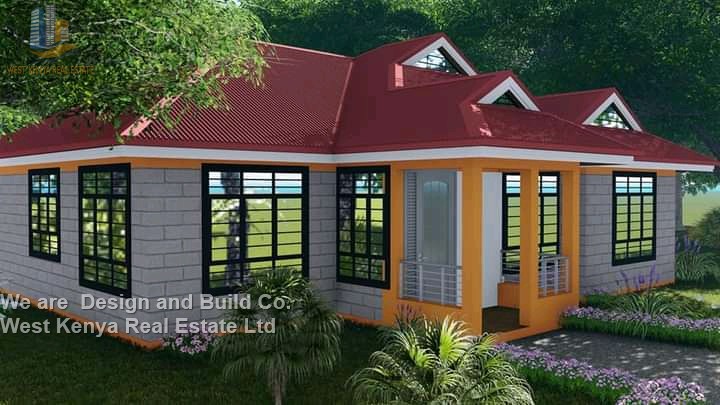
Stone cladding in Kenya: types, sources and finish options
Popular Kenyan stones (Mazeras, Machakos, Tanga, Coral, Blue stone) — visual, hardness and common uses
Kenya’s stone cladding market is dominated by naturally sourced stones such as Mazeras, Machakos, Tanga, Coral, and Blue stone. Mazeras stone is known for its rich earthy tones and layered texture, perfect for both rustic and modern homes. Machakos and Blue stone are denser and ideal for exterior façades needing strength and durability. Coral and Tanga stones, commonly found in coastal regions, offer a lighter color palette and are easier to shape for decorative walls. Each type gives a unique appearance, ensuring homeowners can find a finish that complements their design and environment.
Natural vs manufactured stone: weight, fixings & cost implications
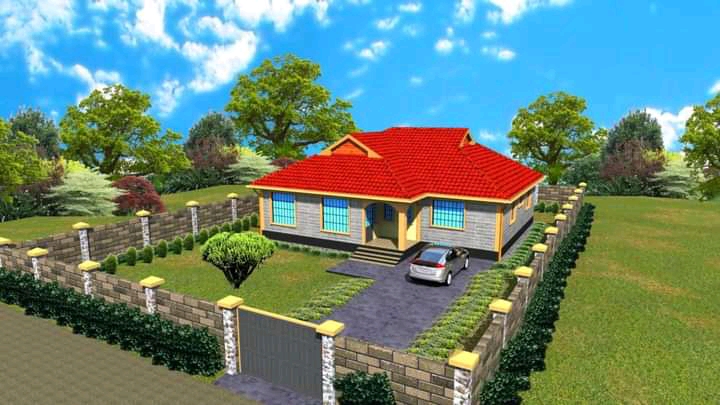
Natural stone cladding is heavier, requiring strong wall substrates and reliable anchoring systems. While its natural beauty and durability justify the higher price, transport and installation costs can increase overall budgets. Manufactured stone, on the other hand, is lighter and easier to install. It mimics real stone effectively and reduces the need for structural reinforcement. However, it may not last as long as natural stone under extreme weather exposure. The choice often depends on project scale, cost tolerance, and desired longevity.
Finishes and profiles (chisel, bush-hammered, smooth, random rubble)
Finishes play a major role in defining texture and appeal. Chisel and bush-hammered finishes give rough, traditional looks suited for outdoor walls and garden spaces. Smooth and honed finishes create a sleek, modern aesthetic preferred for commercial façades. Random rubble patterns, where stones are arranged unevenly, bring a natural feel that blends seamlessly with landscapes. Kenyan suppliers offer all these finish options, letting builders balance aesthetics, budget, and durability in their wall design.
Real Kenyan suppliers & how to evaluate them (supplier checklist)
What to check: quarry/source, sample pieces, delivery, lead times, installation service, warranty
Before selecting a wall cladding supplier in Kenya, it’s crucial to verify where their stones come from. Reliable suppliers disclose quarry locations, provide sample pieces for testing, and guarantee delivery timelines. Always ask about lead times, as quarry delays can affect project schedules. A good supplier also offers installation services or recommends trusted contractors. Finally, confirm warranty terms covering material defects and workmanship—this can save you significant repair costs later.
How to request quotes (information to prepare: m², substrate, access, finish)
When requesting quotes, prepare key project details to get accurate pricing. Include the total wall area in square meters, type of substrate (brick, block, concrete), and site accessibility for delivery. Specify the desired stone type, finish, and installation height. Photos of the site help suppliers estimate labor needs and adhesive or fixing requirements. Clear communication speeds up quotation turnaround and prevents cost overruns during construction.
Cost guide & example price ranges (Kenyan context)
Sample price bands: economy, mid-range, premium (material + estimated installation per m²) — clearly labelled ranges and assumptions (2025 estimates)
As of 2025, wall cladding in Kenya varies by material, finish, and supplier. Economy options like basic machine-cut stone start at lower price ranges, while mid-range materials such as Mazeras or Machakos cladding fall in the moderate bracket. Premium finishes like bush-hammered Coral or imported stone veneers can be significantly higher. Costs include both material and installation, with additional expenses for transport and sealants. Always confirm current rates, as prices fluctuate with quarry production and fuel costs.
How height, substrate condition, scaffolding and transport change cost
Installation costs rise when working on multi-storey buildings due to scaffolding and safety requirements. Damaged or uneven wall substrates require extra plastering or reinforcement, adding to expenses. Transport also plays a major role—projects outside Nairobi or Mombasa often face higher logistics fees. Selecting locally available stone reduces freight costs and ensures faster delivery. Factoring in these elements helps plan an accurate and realistic cladding budget.
Installation: step-by-step (DIY vs professional)
Substrate prep, damp-proofing and waterproof membranes
Proper preparation ensures your cladding lasts for decades. Start by cleaning the surface and removing loose debris or paint. Apply a waterproof membrane to protect against moisture infiltration, especially in rainy regions. For old walls, repair cracks or uneven sections before applying adhesive. Skipping these steps can cause tiles to loosen or discolor over time.

Fixing methods: adhesive, mechanical anchors, backer systems
The fixing method depends on stone weight and wall type. Lightweight veneers can use strong tile adhesives designed for exterior use. Heavy natural stones require mechanical anchors or stainless-steel brackets for secure attachment. Backer systems combine both approaches, improving load distribution and allowing expansion gaps. Always follow manufacturer instructions to ensure structural safety and long-term durability.
Grouting, sealing & finishing touches
After fixing, joints are grouted using weather-resistant compounds that prevent water entry. Once dry, apply a sealant to enhance color and resist stains. Sealants also make cleaning easier, extending the life of the cladding. A final inspection ensures even spacing and a clean finish, leaving the wall looking polished and professional.
Typical lead times and staging for Kenyan projects
Most residential cladding projects in Kenya take one to three weeks, depending on size and complexity. Urban suppliers often deliver within a few days, but custom-cut stones can extend lead times. Staging is usually done in three phases: surface prep, installation, and sealing. Hiring experienced installers ensures efficiency and minimises rework, keeping your project on time and budget.
Performance, thermal & acoustic benefits (measured considerations)
Does cladding improve insulation? (R-value implications & adding insulation under cladding)
Yes, cladding helps improve a wall’s insulation performance. When combined with foam boards or mineral wool underlayers, it increases the wall’s R-value — meaning less heat escapes during cold weather and less heat enters during hot days. In Kenya’s varied climates, especially in highland and coastal regions, using insulated cladding systems can cut energy use for heating or cooling by up to 25%.
Acoustic impact for busy urban homes
Cladding materials like stone, fiber cement, and composites reduce noise transmission from outside sources such as traffic or construction. For homes near main roads in Nairobi or Mombasa, this makes interiors noticeably quieter. Heavier materials like natural stone perform best since their density absorbs low-frequency sounds.
Maintenance, cleaning & expected lifespan in Kenya
Routine cleaning, resealing, joint inspection
Most cladding types in Kenya need simple maintenance. Regularly washing surfaces with mild detergent and water removes dust and moss buildup. Stone cladding should be resealed every 2–3 years to prevent water absorption, while joints must be inspected to spot loose grout or cracks early.
When to repair vs replace (signs of failure)
Replace cladding only when you notice cracks, water stains, or detachment. Minor issues like chipped tiles or faded sealer can be repaired locally. However, widespread cracking, mold growth, or loose fixings often indicate moisture behind the wall — meaning full replacement is safer and longer-lasting.
Common mistakes, site risks & how to avoid costly failures
Wrong fixings for coastal zones / poor substrate prep
Using non-galvanised metal fixings or poor wall preparation causes early failure. Coastal projects must use stainless-steel anchors and anti-corrosive adhesives. Walls should be cleaned, primed, and leveled before installation; otherwise, panels detach or crack with time.
Cost cutting that backfires (wrong adhesives, no movement joints)
Cheap adhesives or skipping expansion joints may save upfront costs but lead to major repairs later. Temperature changes in Kenya cause wall expansion and contraction — movement joints prevent cracking. Always follow manufacturer recommendations and use professional installers.
Permits, standards & safety considerations in Kenya
Local building code considerations, fire safety & planning (what to check with your county building office)
Before installing exterior cladding, check your county’s construction regulations. Most counties, including Nairobi and Mombasa, require materials that meet fire-resistance and moisture-proofing standards. Always include cladding details in your architectural submission to avoid approval delays.
Health & safety on site (scaffold, lifting heavy stone)
Wall cladding projects often require scaffolding and lifting tools. Workers must wear safety harnesses and gloves, especially when handling sharp or heavy stones. Proper site supervision reduces risks of injuries and material damage.
Case studies & gallery (Kenyan projects)
Short project writeups: residential feature wall, commercial façade, coastal house — problems solved, costs, before/after
Residential feature wall, Nairobi: Used Machakos stone veneer to reduce repainting costs. Cost ~KSh 3,200/m² including installation.
- Commercial façade, Kisumu: Fiber cement panels replaced old plaster, saving on repainting and adding modern appeal.
- Coastal villa, Diani: Coral stone cladding improved moisture resistance and aesthetics, lowering wall maintenance significantly.
Each project shows how choosing the right cladding material improves both value and performance over time.
Where to buy & local supply map (Nairobi, Mombasa, Kisumu)
Trusted stockists & quick contacts (example suppliers and what they specialise in)
- Nairobi: Tile & Carpet Centre, Kenya Marble Quarries, Classic Tiles Ltd — wide stone and composite selections.
- Mombasa: Coastal Stone Works, Al-Fahim Traders — focus on coral and Tanga stone.
- Kisumu: Stone Gallery Kisumu, Modern Surfaces Ltd — ideal for inland builders needing light stone options.
Always request samples and delivery quotes before purchase to ensure material quality and compatibility with your site.
Warranty, guarantees & after-sales (what to demand from suppliers)
Typical warranty items (material defects, installation workmanship) and contract tips
Reputable Kenyan suppliers offer warranties covering manufacturing defects for 3–10 years. Always confirm coverage for installation workmanship too, especially for stone cladding projects. Read the fine print — warranties usually exclude damage from poor installation or neglect.
For big projects, request written contracts specifying delivery dates, quality standards, and replacement policies.
How to get accurate quotes — downloadable checklist / template (CTA)
Short downloadable checklist: area, substrate photos, preferred finish, access notes, budget band
To get accurate cladding quotes, prepare:
- Measured wall area (in m²)
- Photos showing substrate condition
- Preferred finish or stone type
- Notes on site access (e.g., ladders, scaffolding)
- Target budget range
Attach this information when contacting suppliers — it helps them give more realistic and comparable prices.
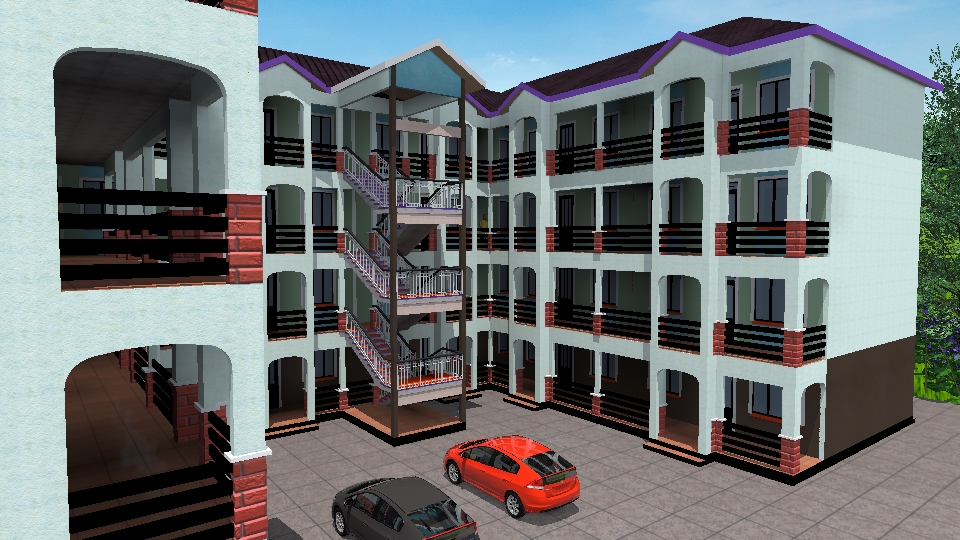
Conclusion
Wall cladding in Kenya is more than just decoration — it’s protection, insulation, and value enhancement all in one. Whether you choose natural stone, WPC, or modern composite panels, investing in the right material for your region ensures long-lasting performance and visual appeal.
For most homeowners, getting 3 quotes, checking supplier credentials, and asking for samples before buying are the key steps to avoid costly mistakes. Remember, the right wall finish improves both beauty and resale value.
